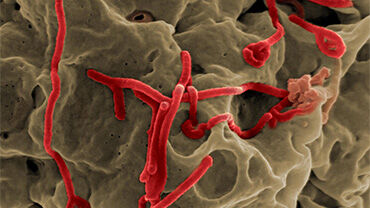Public health management of persons who have been exposed to the Ebola virus
The guidance identifies the main actions for contact monitoring depending on the level of exposure to an Ebola infection
A new ECDC report identifies options for action on management of contacts – persons who have or may have been exposed to the Ebola virus – depending on their level of exposure. It is targeted at EU/EEA public health authorities.
As the Ebola outbreak in West Africa continues, it is possible that a person travelling from an area with Ebola community transmission might develop the disease after arriving in the EU, as stated in the latest ECDC risk assessment from 17 October.
The highest risk of transmission of Ebola is in the period between the onset of the first symptoms, the recognition of the disease by healthcare professionals and the subsequent isolation of the patient. To reduce the risk of further transmission, it is therefore essential to detect and isolate cases early as well as to identify possible Ebola cases among their contacts through contact tracing and monitoring.
The guidance identifies the main actions for contact monitoring depending on the level of exposure to an Ebola infection:- low-risk exposure, such as casual contact with an Ebola-infected person with no symptoms- high-risk exposure, such as close face-to-face contact with an Ebola-infected symptomatic person, with no protective clothing - occupational healthcare exposure - for healthcare workers involved in caring for an Ebola patient.
Public health management of persons having had contact with Ebola virus disease cases in the EU
More information:
Ebola outbreak in West Africa: Latest updates
Areas with community transmission, Ebola outbreak in West AfricaInformation for travellers, Ebola outbreak in West AfricaECDC risk assessment, 17 October






